4513
Diving suit
Before the advent of space suit man invented and perfected the other long suit - diving. The ocean was the first foreign environment, where we sent a representative. And the evolutionary path that went to study costume ocean depths, is amazing.
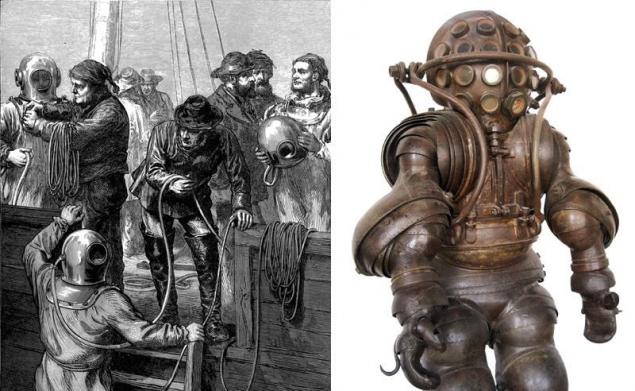
The first device to dive to great depths of the English Astronomer Royal, geophysics, mathematics, meteorology, physics and demographer Edmund Halley, the end of the 17th century

"Bell sank to the bottom. Then assistant put on the head of another, a small bell, and was able to look a bit like on the bottom - as far as it allows the handset through which he breathed in a large bell remaining air. After that, the top were dropped barrels of additional air supply, weighted load. Assistant found them and pulled the bell ".
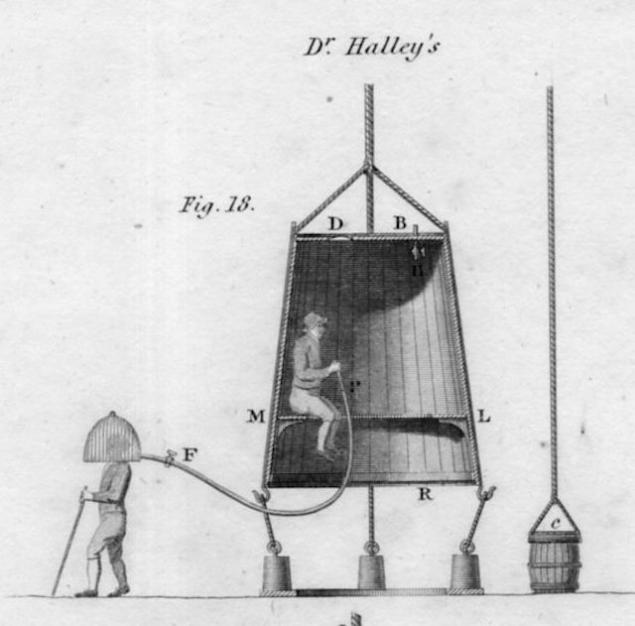
Suit for immersion French aristocrat Pierre Remy de Bova, 1715

One of the two hoses stretched to the surface - the entry of air to breathe; the other served to remove exhaled air.

Apparatus for immersion John Lethbridge, 1715

This sealed oak barrel was intended to raise the values from sunken ships. In the same year, another Englishman Andrew Becker has developed a similar system, which was equipped with a system of tubes for inhalation and exhalation.

Apparatus for immersion Charles Klingerta 1797

The inventor tried it in the river flowing through his hometown of Breslau (now Wroclaw, Poland). The upper part of the costume is protected by a cylindrical design, so you can walk on the bottom of the river.
"It consisted of a jacket, trousers of waterproof leather and a helmet with a porthole. The helmet was connected with a tower, in which there was a tank of air supply. The reservoir has not been replenished, so that the residence time of the water was limited ".

Costume Chauncey Hall, 1810

The first deep-sea diving suit with heavy boots Augustus Siebe (Germany) 1819
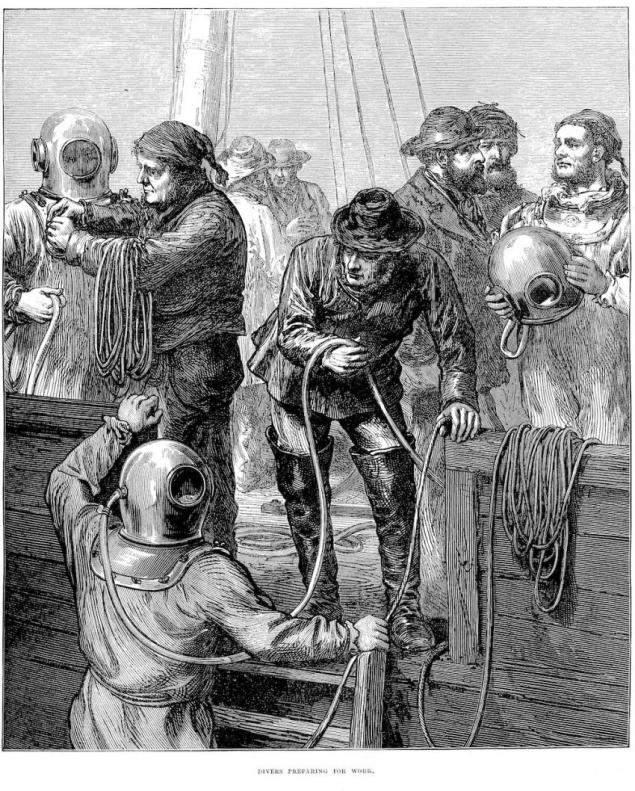
The disadvantage was that if the diver had to keep the vertical position, or under the bell could get water. In 1937, the bell was added waterproof garment, allowing the diver to become more mobile.
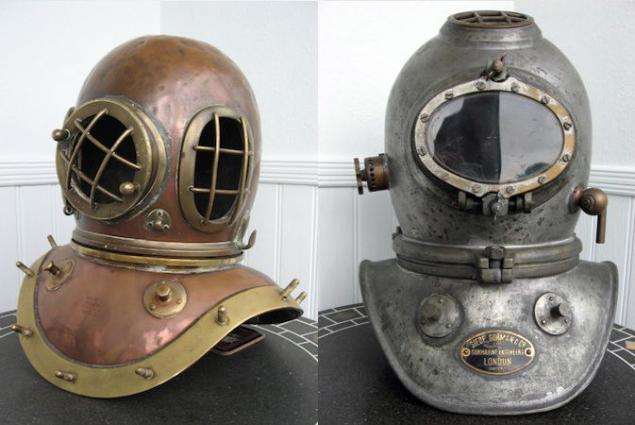
These helmets have been used for over a hundred years.

Diving suit with 20 small portholes Alphonse and Theodore Karmagnol, Marseille, France, in 1878

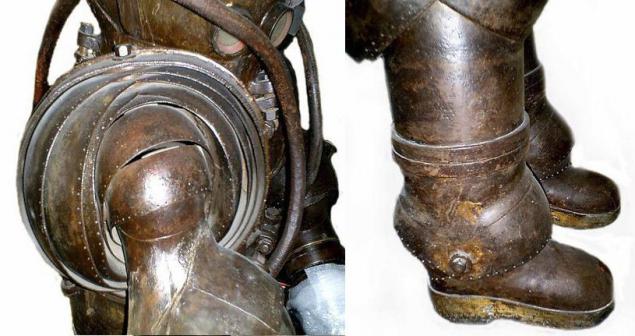
Apparatus Henry Flüsse 1878
Rubberized mask was connected to a sealed tube with breathing bag and a box with a substance that absorbs carbon dioxide from exhaled air.
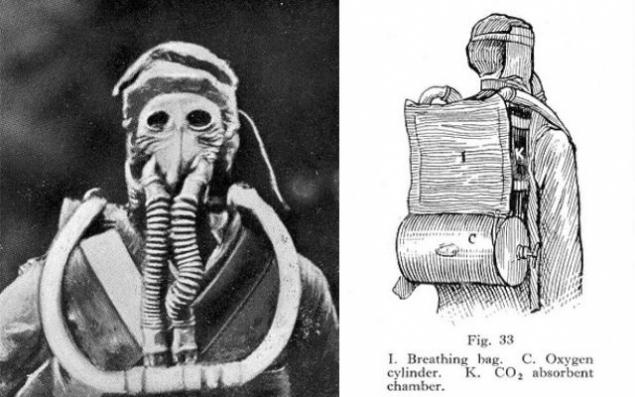
Diver descends to the bottom off the coast of Chile, where there was a wreck of the British vessel Cape Horn, to pick up a cargo of copper 1900

One of the first diving suits with maintaining the pressure developed by M. de Pluvault 1906

The costume is made of aluminum alloy Chester McDuff weighing about 200 kg, 1911

Three generations of diving suits German company "Neufeld and Kuhnke», 1917-1940

The first model (1917-1923)
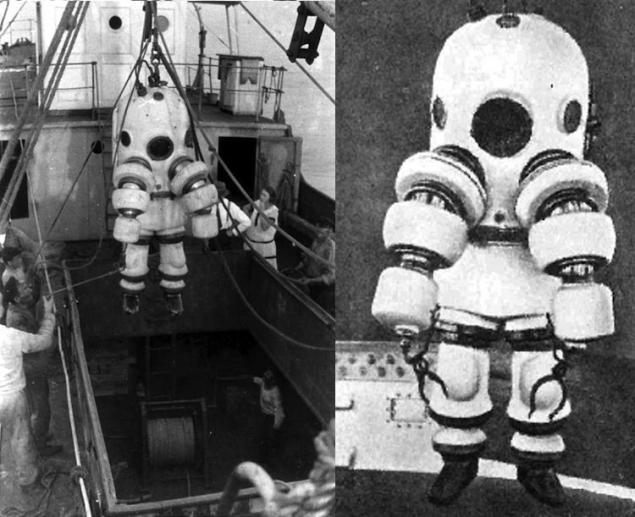
The second (1923-1929)
Suit third generation (promoted between 1929 and 1940) allowed to dive to a depth of 160 m. And was equipped with a built-in phone.

Mr. Perez and his new steel diving suit, London, 1925

Instructor checks the status of the student, lying in a decompression chamber during school hours divers, Kent, England, 1930

Pages from a magazine with instructions on how to make your own wet suit from scrap materials such as cans for storing cookies or vessel for heating water


Inflatable costume

Mini-submarine for one person 1933

Operation on the rise of the surface of bones of a mastodon 1933
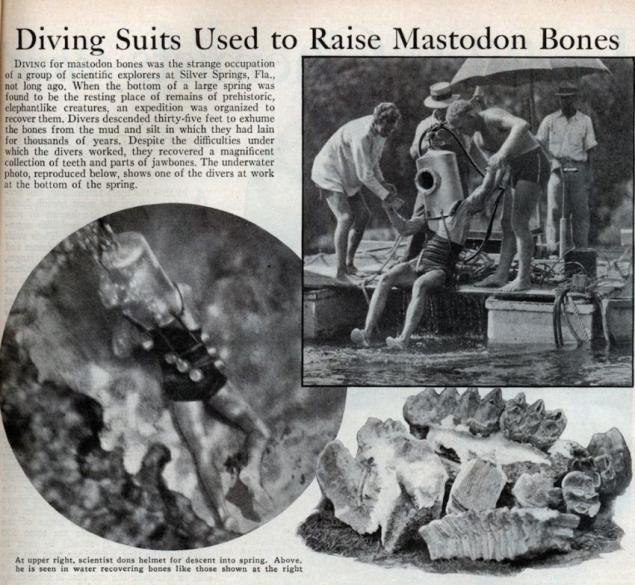
Metal suit that allowed the diver to descend to a depth of 350 m, 1938

The first suit with automatic pressure regulator and compressed air cylinders Cousteau and Ganja 1943
![]()
Suit, allowing the diver considerable time working at a depth of 300 meters without the long process of decompression, 1974
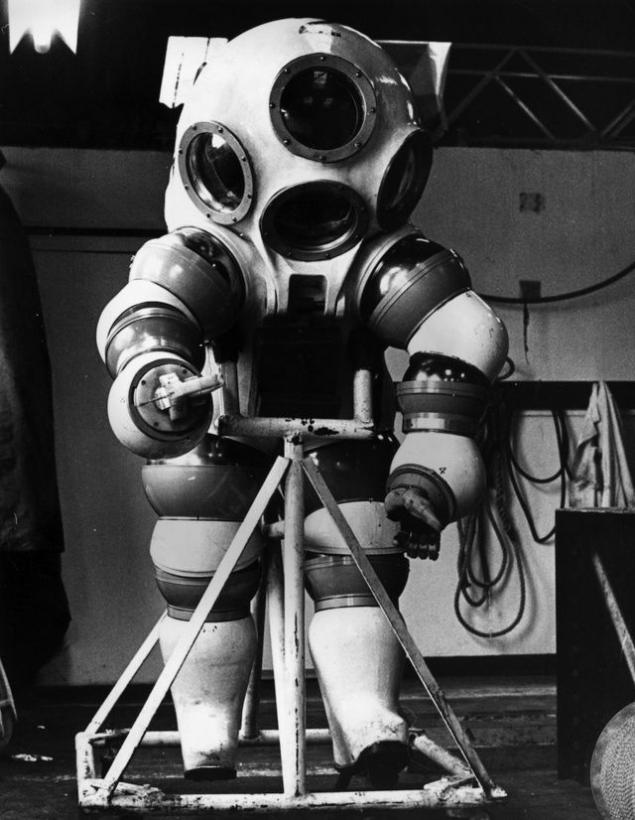
A woman with a man in a diving suit, approx. 1880
![]()
Source: io9.com

The first device to dive to great depths of the English Astronomer Royal, geophysics, mathematics, meteorology, physics and demographer Edmund Halley, the end of the 17th century

"Bell sank to the bottom. Then assistant put on the head of another, a small bell, and was able to look a bit like on the bottom - as far as it allows the handset through which he breathed in a large bell remaining air. After that, the top were dropped barrels of additional air supply, weighted load. Assistant found them and pulled the bell ".

Suit for immersion French aristocrat Pierre Remy de Bova, 1715

One of the two hoses stretched to the surface - the entry of air to breathe; the other served to remove exhaled air.

Apparatus for immersion John Lethbridge, 1715

This sealed oak barrel was intended to raise the values from sunken ships. In the same year, another Englishman Andrew Becker has developed a similar system, which was equipped with a system of tubes for inhalation and exhalation.

Apparatus for immersion Charles Klingerta 1797

The inventor tried it in the river flowing through his hometown of Breslau (now Wroclaw, Poland). The upper part of the costume is protected by a cylindrical design, so you can walk on the bottom of the river.
"It consisted of a jacket, trousers of waterproof leather and a helmet with a porthole. The helmet was connected with a tower, in which there was a tank of air supply. The reservoir has not been replenished, so that the residence time of the water was limited ".

Costume Chauncey Hall, 1810

The first deep-sea diving suit with heavy boots Augustus Siebe (Germany) 1819

The disadvantage was that if the diver had to keep the vertical position, or under the bell could get water. In 1937, the bell was added waterproof garment, allowing the diver to become more mobile.

These helmets have been used for over a hundred years.

Diving suit with 20 small portholes Alphonse and Theodore Karmagnol, Marseille, France, in 1878


Apparatus Henry Flüsse 1878
Rubberized mask was connected to a sealed tube with breathing bag and a box with a substance that absorbs carbon dioxide from exhaled air.

Diver descends to the bottom off the coast of Chile, where there was a wreck of the British vessel Cape Horn, to pick up a cargo of copper 1900

One of the first diving suits with maintaining the pressure developed by M. de Pluvault 1906

The costume is made of aluminum alloy Chester McDuff weighing about 200 kg, 1911

Three generations of diving suits German company "Neufeld and Kuhnke», 1917-1940

The first model (1917-1923)

The second (1923-1929)
Suit third generation (promoted between 1929 and 1940) allowed to dive to a depth of 160 m. And was equipped with a built-in phone.

Mr. Perez and his new steel diving suit, London, 1925

Instructor checks the status of the student, lying in a decompression chamber during school hours divers, Kent, England, 1930

Pages from a magazine with instructions on how to make your own wet suit from scrap materials such as cans for storing cookies or vessel for heating water


Inflatable costume

Mini-submarine for one person 1933

Operation on the rise of the surface of bones of a mastodon 1933

Metal suit that allowed the diver to descend to a depth of 350 m, 1938

The first suit with automatic pressure regulator and compressed air cylinders Cousteau and Ganja 1943
Suit, allowing the diver considerable time working at a depth of 300 meters without the long process of decompression, 1974

A woman with a man in a diving suit, approx. 1880
Source: io9.com























